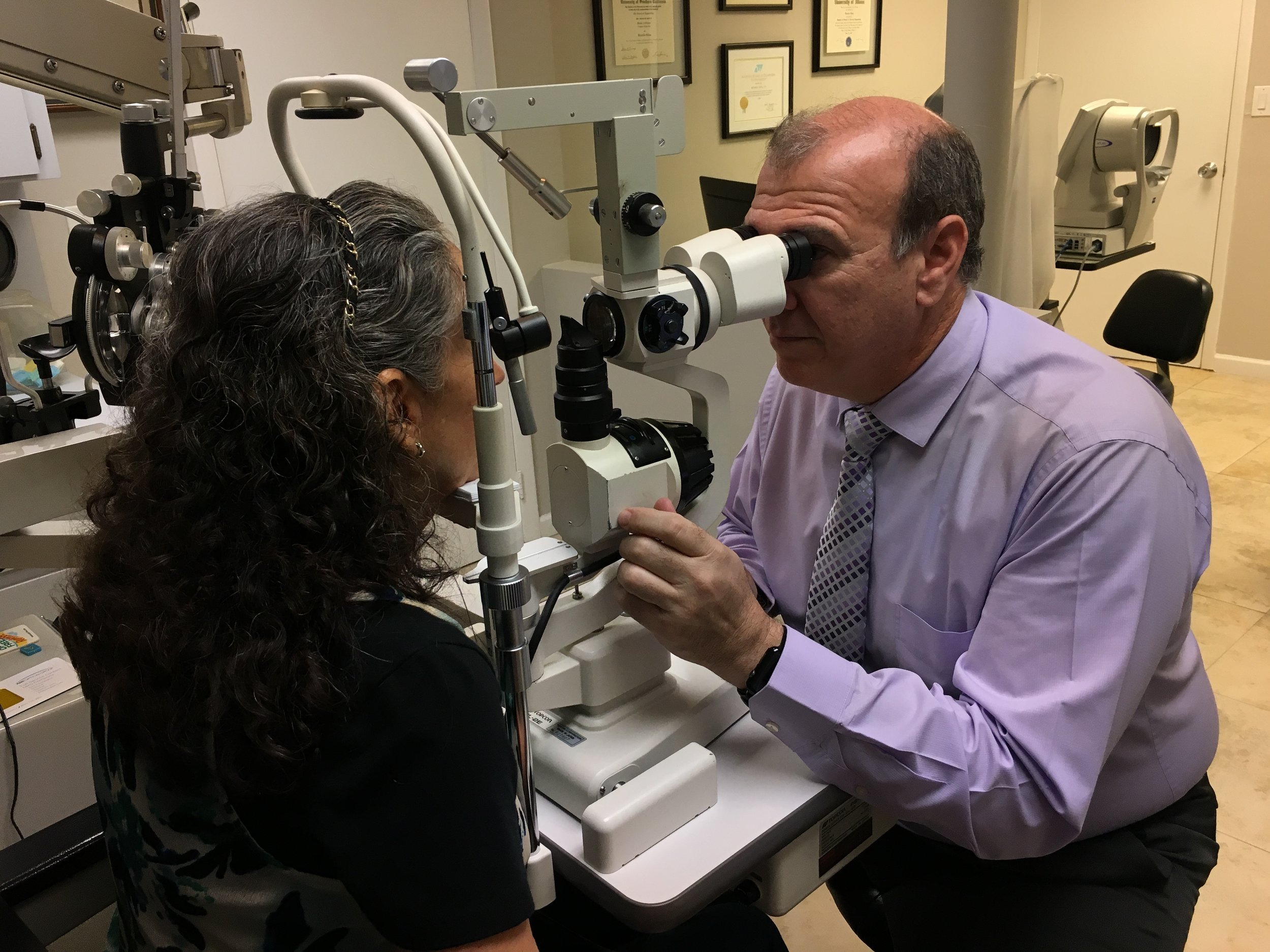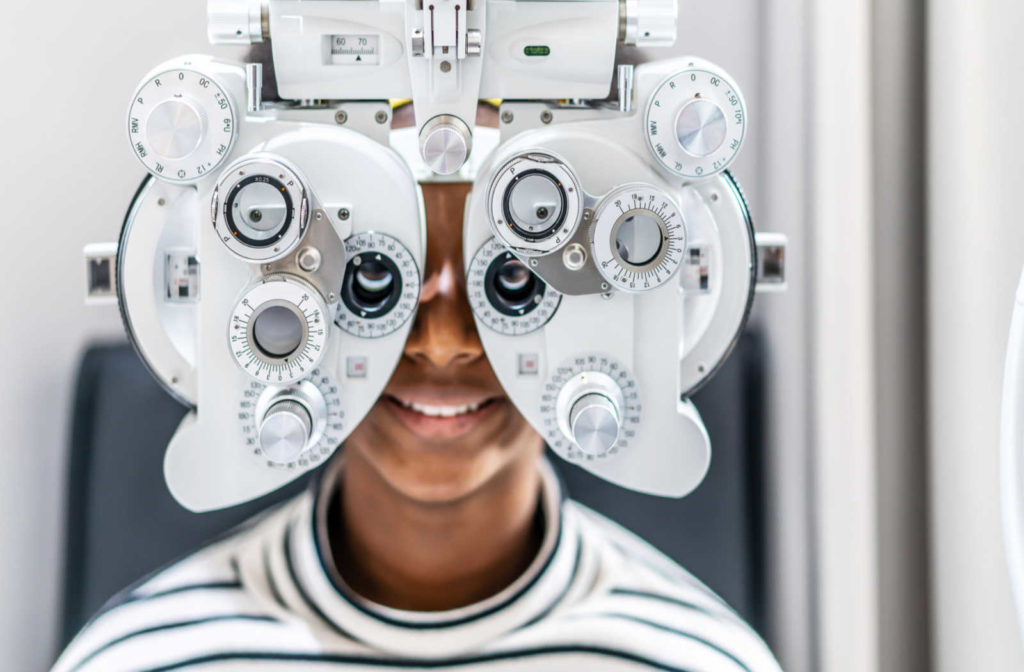Discover a Trusted Optometrist Chino for Household Eye Treatment Solutions
Discover a Trusted Optometrist Chino for Household Eye Treatment Solutions
Blog Article
Discovering the current Technological Improvements in Optometry and What They Mean for Optometrists
From the precision of Optical Coherence Tomography to the nuanced understandings offered by AI-driven diagnostic tools, these technologies are establishing brand-new criteria in person analysis and treatment. As these innovations permeate the practice, eye doctors are faced with the difficulty of welcoming these devices to enhance patient outcomes.
Innovations in Diagnostic Tools
Advancing the field of optometry, developments in diagnostic devices have actually revolutionized the method eye treatment professionals examine and detect aesthetic impairments and eye conditions. The previous years has actually observed significant technical innovations, making it possible for more thorough and accurate evaluations. Optical Comprehensibility Tomography (OCT), for instance, supplies high-resolution cross-sectional pictures of the retina, enabling the early detection of conditions such as glaucoma and age-related macular deterioration. This non-invasive imaging technique has become crucial in contemporary optometric technique.
An additional secret innovation is the introduction of innovative corneal topography systems, which map the surface area curvature of the cornea with accuracy. These devices are specifically valuable for fitting get in touch with lenses and diagnosing corneal disorders. Moreover, electronic retinal imaging has actually changed traditional ophthalmoscopy, using detailed, breathtaking views of the retina that assist in complete visual assessments.
The development of wavefront aberrometry has likewise been crucial, making it possible for the analysis of refractive mistakes with unparalleled precision (Opticore Optometry). This technology helps in tailoring rehabilitative lenses and boosting medical results for refractive surgical treatments. Jointly, these diagnostic developments encourage eye doctors to supply superior individual care, ensuring very early intervention and tailored treatment strategies, inevitably improving visual wellness results
AI in Patient Monitoring
Structure on the structure of cutting-edge diagnostic tools, the consolidation of synthetic knowledge (AI) in client administration represents a transformative jump for optometry. AI systems are progressively employed to enhance performance, precision, and personalization in individual care. By analyzing huge amounts of data, AI can identify patterns and anticipate prospective ocular conditions, allowing eye doctors to tailor treatments much more effectively. This capability is crucial in handling persistent eye diseases such as glaucoma and diabetic retinopathy, where early discovery and continuous tracking are essential.
Additionally, AI-driven systems help with structured individual communications and management processes. Automated scheduling, digital assessments, and customized follow-up strategies not only enhance individual contentment however also optimize time monitoring for practitioners. These systems can triage clients based on the seriousness of their problems, making certain that those in vital demand get punctual interest.
Moreover, AI enhances decision-making by giving eye doctors with evidence-based recommendations and treatment paths. By incorporating data from digital health and wellness records, AI devices use insights that educate clinical choices, minimizing the threat of errors and improving individual results. As AI remains to develop, its duty in client management will likely broaden, improving the landscape of optometric care.
Developments in Retinal Imaging
In the realm of optometry, retinal imaging has witnessed remarkable technological developments that are improving analysis capacities and patient care. Advancements such as Optical Comprehensibility Tomography (OCT) and fundus digital photography have revolutionized just how eye doctors evaluate the retina and visualize.
Boosted imaging modalities like OCT angiography are additional refining analysis accuracy. Eye Doctor. Such advancements promote the identification of minute retinal modifications that might signify disease development.
Furthermore, innovations in expert system are increasing retinal imaging by allowing automatic analysis of huge datasets. These systems aid optometrists in identifying patterns indicative of pathology, thereby enhancing analysis accuracy and performance. Jointly, these innovations are changing retinal imaging right into a foundation of contemporary eye treatment, improving outcomes and increasing healing opportunities.
Teleoptometry's Expanding Function
Teleoptometry is increasingly ending up being an important part of eye care, driven by innovations in data and diagnostic devices. As optometry welcomes digital improvement, teleoptometry promotes remote examinations, permitting eye doctors to expand their services beyond conventional boundaries. This is particularly valuable in rural and underserved locations where access to specialized eye care is commonly minimal. By leveraging high-resolution video clip conferencing and advanced retinal imaging, optometrists can conduct extensive eye exams from afar, making certain timely medical diagnosis and therapy.
The combination of synthetic intelligence (AI) additional improves teleoptometry, enabling the analysis of aesthetic information and assisting in the detection of eye problems such as glaucoma and diabetic person retinopathy. AI-powered formulas can rapidly translate intricate imaging information, providing optometrists with important understandings that strengthen professional decision-making.
In addition, teleoptometry supports connection of treatment with seamless assimilation with electronic wellness records (EHRs), enabling click here now optometrists to keep comprehensive person backgrounds. When consulting with different experts., this makes certain that people receive regular and individualized care even.
In spite of go to my blog these advantages, challenges remain, consisting of making certain information safety and security and managing individual assumptions. Teleoptometry represents a significant stride in the direction of more easily accessible, efficient, and patient-centered eye care. As innovation advances, its duty is positioned to broaden further.

Future Fads in Eye Care
A myriad of ingenious fads is established to reshape the future of eye care, driven by technical advancements and the developing requirements of clients. One substantial trend is the assimilation of fabricated intelligence (AI) in diagnostics, which assures to improve the accuracy and effectiveness of eye assessments. AI algorithms can examine huge quantities of data from retinal images, possibly discovering problems like diabetic retinopathy and glaucoma earlier than typical approaches.
In addition, personalized medication is obtaining grip in optometry, with hereditary screening notifying tailored treatment plans. This strategy intends to maximize individual results by customizing interventions to private hereditary accounts. Wearable modern technology, such as smart contact lenses, is likewise imminent, supplying real-time surveillance of intraocular pressure or sugar levels, hence providing constant insights into eye and systemic health.
The fostering of augmented fact (AR) and online truth (VR) in training and patient education and learning is one more emerging fad. These technologies offer immersive experiences that can boost understanding and abilities both for eye doctors and individuals. As these patterns progress, optometrists should remain abreast of technical developments to supply important site sophisticated care, making certain improved client end results and complete satisfaction in the dynamic landscape of eye care.
Verdict

Jointly, these diagnostic improvements encourage optometrists to deliver premium individual treatment, guaranteeing very early treatment and tailored treatment approaches, inevitably enhancing visual wellness results.

As these modern technologies proceed to progress, eye doctors have to adjust and include them right into practice, eventually enhancing workflow efficiency and boosting the requirement of eye treatment provided to people.
Report this page